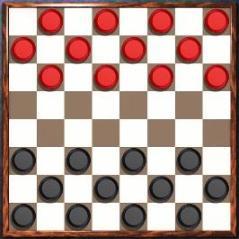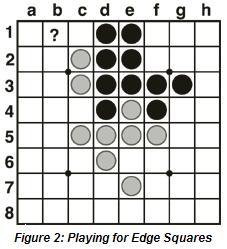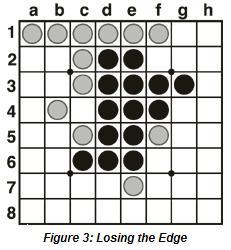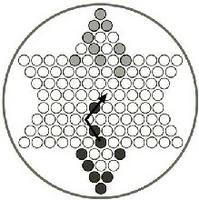Checkers (Cont.)

Additional Checkers Strategies
In Checkers, the overall goal is to keep the balance of power in your favor, which means having more pieces than your opponent. Of course, having six badly positioned men while your opponent has four well-placed kings is not an advantageous situation. But on the whole if you can keep your piece count up, you will tend to win.
To get ahead in piece count, you will need to balance offense with defense. If you have a chance to get a king early in the game while keeping your opponent from doing the same, you will be in a good position to mop up several of his or her pieces. But charging out to try to obtain a king early is likely to result in failure, since a piece out front all by itself is likely to be captured.
A more reliable strategy for the beginner is to concentrate on defense, trying to avoid positions where you are forced to lose pieces. For the most part, this means keeping your pieces backed up.
Backing up your pieces means guarding their rear flanks. Look at Figure 1 to see how the front line of white pieces is protected by the pieces behind them. At the moment, the front pieces are invulnerable to the enemy.
To keep your pieces backed up you often have to move the back-up piece into place first, and then move the front line piece into position in front of it (since if you did it the other way around the front-line piece would be vulnerable for one turn).
Figure 1 also shows that white has moved only one piece from the back wall (the very back row of checkers). Keeping pieces on the back wall until you have a good reason to move them is a good defensive strategy since those pieces cannot be jumped where they stand.
By keeping your pieces safe, you can try to force your opponent into making a bad move; a move that results in you making a capture with your opponent unable to reciprocate.
If you can wear your opponent down in this way, you will be the first to get a king, and then you can go on an offensive attack.
-- More advanced strategies coming up next......






























